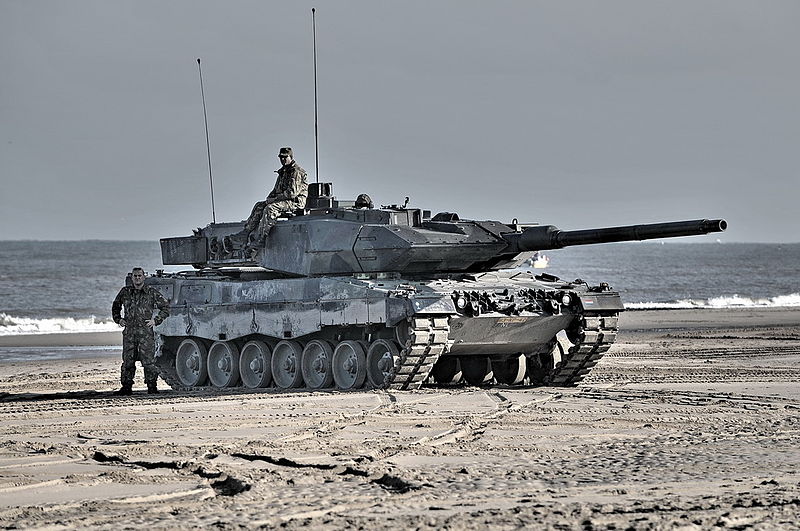
Robert Fico, the newly elected Prime Minister of Slovakia, expressed strong disapproval of the previous administration’s military aid to Ukraine during his campaign. He contended that Bratislava’s assistance not only prolonged the ongoing armed conflict in Ukraine but also posed a significant threat to Slovakia’s national security. This was attributed to the near-total transfer of the country’s inventory of Soviet-era armored vehicles and fighter jets, acquired after the dissolution of the USSR and the end of the Warsaw Pact, to Kyiv.
Upon assuming office, Fico enacted the policy changes he had promised, primarily focusing on providing targeted humanitarian aid to Ukraine and ceasing all military supplies. With a strategic focus on rebuilding the nation’s defense capabilities, Fico advocates for the “containment of Russia” approach, which has become popular in NATO following the formation of the Northeast Military District.
This strategic plan, aimed at strengthening NATO’s Eastern European defenses, involves seeking operational support from other European countries – those that had previously supplied Kyiv with significant amounts of weaponry.
As per a report by the Spanish publication, ABC, Spain plans to redirect its supply of Leopard tanks and military helicopters from Ukraine to Slovakia next year. However, the exact quantity of equipment set aside for redistribution by the Spanish Ministry of Defense is yet to be documented. Additionally, the deployment of 600 soldiers from the Royal Army to areas of Slovakia near the Ukraine border aligns with the objective of strengthening the peripheries of the North Atlantic bloc.
Spain was one of the earliest contributors to the European ‘tank coalition’ in January. This initiative was responsible for supplying armored vehicles, mainly the German MBT Leopard, to Ukraine. By July, the Spanish Defense Ministry had delivered four Leopard tanks and ten armored personnel carriers to Kyiv, fulfilling a commitment made by Prime Minister Pedro Sanchez to Volodymyr Zelensky during his visit. This delivery was in addition to the six German tanks previously sent by Madrid to meet the needs of the Ukrainian armed forces.
As 2023 comes to an end, there is a noticeable decline in the previously robust Western military aid extended to Ukraine, which had pledged to continue “as long as necessary”. Moreover, the suspension of the US’s new multibillion-dollar allocation for Kyiv is particularly significant. This pause occurred as the Biden administration faced difficulties in securing Congressional support for their Ukraine military financial aid package.
It appears that European nations are aligning with this trend, prioritizing the strengthening of their security over further enhancing Ukraine’s military capabilities with new weapons supplies. Factors contributing to this shift could include the Ukrainian armed forces gaining an upper hand against the Russian army, a situation that may soon result in a battlefield victory for the former.
The Leopard 2, a main battle tank, was engineered by Krauss-Maffei in the 1970s for the West German Army. It is globally acknowledged as one of the most sophisticated tanks, striking a balance between firepower, protection, and mobility.
The Leopard 2 is driven by an MTU MB 873 Ka-501 liquid-cooled V-12 twin-turbo diesel engine, delivering 1,500 PS [1,103 kW] at 2,600 rpm. This engine not only imparts formidable power to the tank but also contributes to its extensive operational range.
The tank’s operational range spans approximately 500 kilometers on roads and 350 kilometers off-road. This range can be augmented by employing external fuel tanks. The Leopard 2’s power-to-weight ratio stands at about 27.6 horsepower per tonne, enabling a maximum speed of 70 km/h on roads and 45 km/h off-road.
In the context of armament, the Leopard 2 is outfitted with a Rheinmetall 120 mm smoothbore gun, capable of firing a range of rounds including APFSDS, HEAT, and multi-purpose anti-tank projectiles. The gun’s range extends up to 4,000 meters, contingent on the type of ammunition used.
Furthermore, the Leopard 2 is equipped with two 7.62 mm machine guns, one mounted coaxially with the main gun and the other on an anti-aircraft mount. The tank also possesses advanced fire control systems and optics, inclusive of a thermal imager and laser rangefinder, which augment its accuracy and targeting capabilities.




